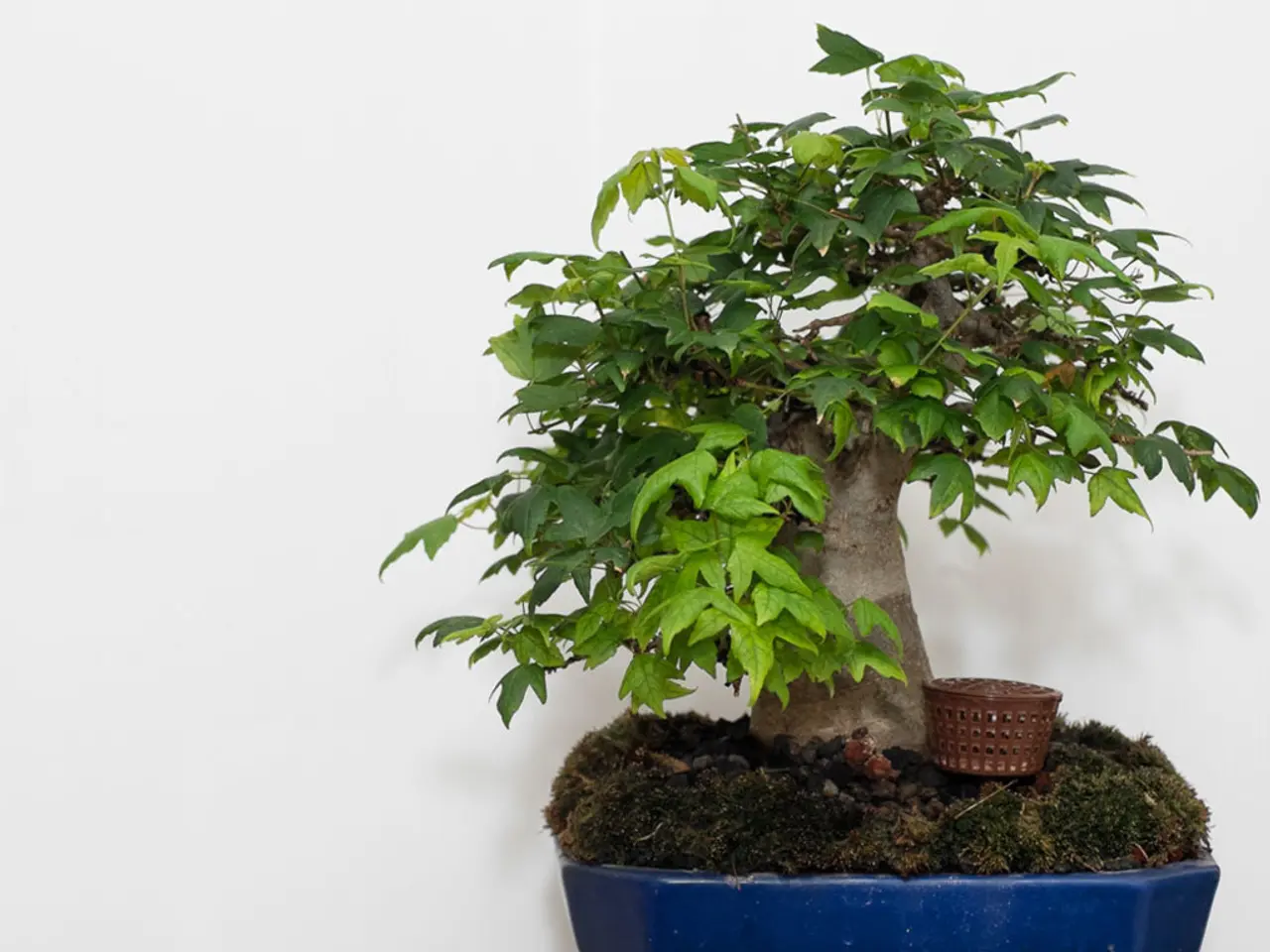Routine Monitoring and Early Detection are Crucial for Bonsai Health
Bonsai trees, with their intricate beauty and delicate nature, require careful attention and timely intervention to thrive. Here are some common signs of distress that bonsai enthusiasts should look out for and how to address them.
Yellowing Leaves and Leaf Drop
Yellowing leaves and leaf drop can be caused by either overwatering (often accompanied by soft, mushy roots and root rot) or underwatering (dry soil). To fix this, check soil moisture regularly, ensure good drainage, avoid letting the tree sit in standing water, and water deeply but consistently.
Brown Tips on Leaves
Brown tips on leaves are usually caused by excessive direct sunlight or inconsistent watering. Moving the bonsai to a location with indirect sunlight and maintaining a regular watering schedule helps prevent this.
Wilting
Wilting is often due to underwatering or sudden temperature changes. Maintaining stable temperatures and avoiding exposure to drafts such as air conditioners is advised.
Mold on Soil Surface
Mold on the soil surface indicates poor drainage or airflow. Improving drainage or repotting may be necessary.
Slow or No Growth
Slow or no growth may signal poor soil quality or nutrient deficiency. Refreshing soil and applying suitable fertilizer can stimulate growth.
To prevent further decline, maintain proper watering practices—water when the top inch of soil is dry—provide bright, indirect light, ensure good pot drainage, avoid temperature fluctuations, and monitor for pests. Regular observation is critical to catch early signs of stress and adjust care accordingly.
In low-humidity environments, watering frequency depends on factors like temperature, soil type, and tree species, usually every 2-3 days.
In summary, careful monitoring of leaf color, moisture levels, and environment combined with consistent watering and good airflow are essential to identify and mitigate subtle distress signs in bonsai trees before serious decline occurs. Recognizing early warning signs of distress, such as subtle changes in leaf color, texture, or orientation, is crucial for bonsai enthusiasts to intervene promptly.
Remember, specialized bonsai soil with its tailored mix of components is recommended to guarantee superior tree health and longevity. Organic pest control methods like neem oil and insecticidal soap can be used to protect bonsai trees from pests. Most bonsai species thrive in temperatures between 65°F to 75°F (18°C to 24°C).
Indoor bonsai cultivation requires selecting species tolerant of shade, cleverly utilizing artificial lighting, and precision watering to create a harmonious balance. With attentive observation and proactive care, your bonsai tree will flourish, providing you with a constant source of tranquility and beauty.
Bonsai enthusiasts who are interested in expanding their hobby can explore other areas such as home-and-garden and gardening, particularly focusing on lifestyle aspects related to home irrigation systems and organic pest control methods for other planted items. By applying the knowledge and skills gained from tending to bonsai trees, one can extend this skillset into the home-and-garden realm to enhance their overall home lifestyle and garden aesthetic with a delightful touch of greenery. Incorporating various garden elements like bonsai trees, rocks, water features, and colorful plants can contribute to a harmonious, invigorating home-and-garden lifestyle that brings peace, joy, and improved air quality.




